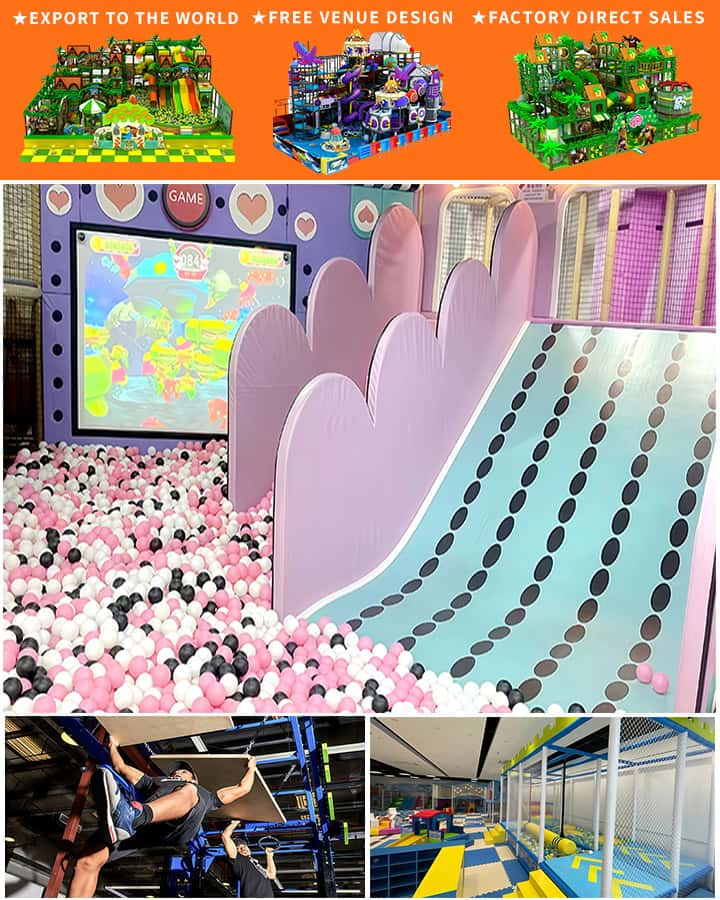Designing an indoor playground is a multifaceted endeavor that combines creativity, safety considerations, and an understanding of child development. The interior design of such spaces plays a critical role in providing an engaging environment where children can play, learn, and grow. Here’s how innovative indoor playground interior design can make all the difference.
Safety First: A Foundation for Fun
Safety is non-negotiable in indoor playground design. Flooring materials must be slip-resistant to prevent falls, while walls should be padded or made from soft, impact-absorbing materials. Equipment should be securely anchored to avoid tipping, and rounded edges are essential to minimize injury risks. Incorporating these elements ensures that children can explore freely without constant supervision.
Bright and Stimulating Colors
Colors have a profound impact on a child’s mood and behavior. Bright, vibrant colors can stimulate excitement and curiosity, making the playground an inviting space for kids. However, it’s important to strike a balance. Too many overpowering colors can be overwhelming and may even lead to restlessness. Neutral tones can serve as a calming background, allowing pops of color on play structures and furnishings to catch the eye and inspire creativity.
Versatile and Modular Furniture

Kids need spaces that adapt to their ever-evolving needs and activities. Modular furniture offers flexibility and longevity, enabling easy reconfiguration as children age or as new trends emerge. Think about multi-functional pieces like foldable tables, stackable chairs, and customizable storage units that can transform with changing requirements. This approach not only maximizes space but also keeps the playground looking fresh and up-to-date.
Themed Play Areas for Imagination
Themed play areas ignite children’s imagination. Whether it’s a pirate ship, enchanted forest, or miniature city, these zones offer immersive experiences that encourage role-playing and social interaction. Each theme can be brought to life through carefully selected decorations, props, and even subtle scents to enhance the sensory experience. These themed environments provide more than just physical activity; they foster cognitive development and emotional growth.
Natural Elements for a Healthy Space
Incorporating natural elements like plants, wooden toys, and water features can create a healthier and more stimulating environment. Plants purify the air and introduce children to the concept of nurturing living things. Wooden elements provide a tactile experience that plastic alternatives cannot replicate. Water features, such as small fountains or interactive aquatic play areas, offer sensory engagement and can be particularly soothing for young minds.
Technological Integration: Smart Playgrounds
Modern indoor playgrounds are increasingly integrating technology to enhance the play experience. Interactive touch screens, digital games, and augmented reality installations can provide educational content disguised as fun activities. Smart sensors can monitor environmental conditions like temperature and humidity to ensure a comfortable setting. Technology not only adds an element of surprise but also prepares children for a tech-driven world in an engaging manner.
Accessibility: Design for All Children
Inclusivity is crucial in modern playground design. Ensure that the equipment and environment are accessible to children with varying abilities. Ramps instead of stairs, sensory-rich areas for children with autism, and adaptive swings are just a few ways to make the playground welcoming for everyone. Thoughtful design in this regard promotes equality and allows every child to participate fully.
Lighting: Setting the Mood
Proper lighting is essential for both safety and ambiance. Natural light should be maximized wherever possible, using large windows or skylights. For areas that require artificial lighting, choose fixtures that mimic natural daylight to reduce eye strain. Consider dimmable lights so the space can transition smoothly from daytime activities to evening events. Soft, warm lighting creates a cozy atmosphere, while brighter, cooler lights can invigorate active play areas.
Conclusion: Designing the Future of Play
An innovative indoor playground interior design marries form and function, creating spaces that are as delightful as they are practical. By focusing on safety, incorporating vibrant yet balanced colors, offering versatile furniture, creating themed play areas, adding natural elements, integrating technology, ensuring accessibility, and optimizing lighting, designers can craft environments that inspire joy and learning. Such thoughtful approaches not only cater to children’s immediate enjoyment but also lay the groundwork for their developmental and social growth, making indoor playgrounds truly magical spaces.




